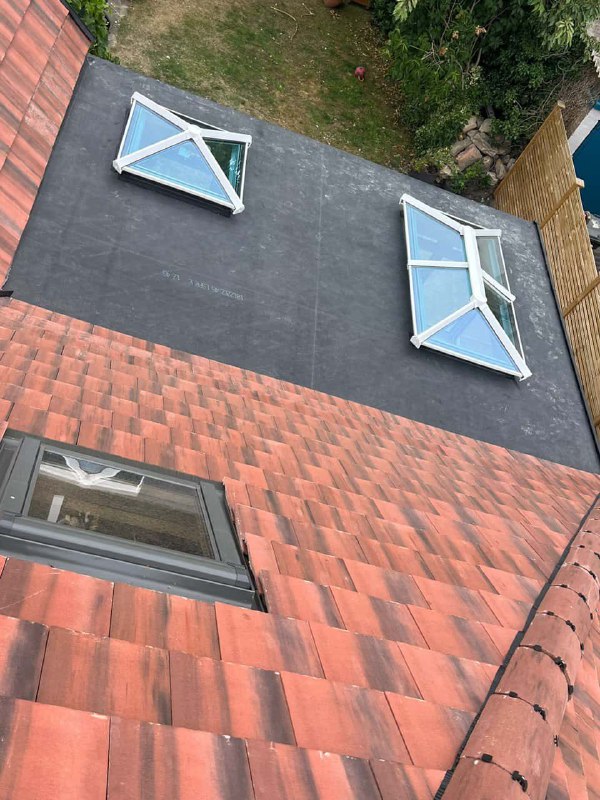Lead Flashing vs. Weather: How to Maintain a Solid Defence
Lead flashing plays a crucial role in protecting your home from water ingress and weather damage. Found around chimneys, dormer windows, and roof valleys, lead flashing provides a robust barrier that prevents rain and moisture from seeping into your roof structure. However, to maintain its effectiveness, lead flashing requires regular care and attention. At LKN Roofing Shortstown, we understand the importance of keeping your roofing system in top condition, and we’re here to help you ensure your lead flashing continues to defend against the elements.
The Importance of Lead Flashing
Lead flashing is favoured for its durability and flexibility, making it ideal for areas of the roof where two surfaces meet or where there’s a risk of water penetration. Properly installed, lead flashing can last for decades, standing up to even the harshest weather conditions. However, exposure to the elements over time can lead to wear and tear, including cracks, corrosion, or displacement.
Neglecting lead flashing maintenance can result in serious issues like water damage, mould growth, and structural problems. By maintaining your lead flashing, you’re not only safeguarding your roof but also preventing costly repairs down the line.
Regular Inspections
One of the most effective ways to maintain your lead flashing is through regular inspections. Ideally, your roof should be inspected at least twice a year—once before winter and once after. During these inspections, check for signs of damage, such as cracks, splits, or loose sections. Pay close attention to areas around chimneys, skylights, and roof valleys, as these are common points of vulnerability.
If you’re unsure about the condition of your lead flashing or lack the expertise to inspect it properly, we at LKN Roofing Shortstown offer professional roof inspections to identify any potential issues before they escalate.
Repairing Minor Damage
Over time, weather conditions can cause minor damage to lead flashing, such as small cracks or the loosening of fixings. It’s essential to address these issues as soon as they’re detected to prevent water from penetrating your roof. Minor cracks can often be repaired with a lead sealant, while loose flashings may simply need re-fastening.
However, if the damage is extensive or if the flashing has begun to corrode, it’s advisable to seek professional assistance. At LKN Roofing Shortstown, we specialise in lead flashing repairs, ensuring that your roof remains watertight and protected from the weather.
Preventing Corrosion
Lead is highly resistant to corrosion, but exposure to certain pollutants or moisture-rich environments can speed up the corrosion process. To prevent this, keep the area around your flashing clean and free from debris. Leaves, moss, and other organic matter can trap moisture against the flashing, leading to accelerated wear.
Additionally, applying a patination oil after installation can help slow down the natural oxidation process of lead, keeping it in better condition for longer. This protective layer not only enhances the appearance of the flashing but also reduces the chances of corrosion.
The Impact of Weather on Lead Flashing
Lead flashing is designed to withstand harsh weather, but extreme conditions like heavy rain, high winds, and frost can take their toll. Freezing and thawing cycles, in particular, can cause the lead to expand and contract, leading to cracks or displacement. Ensuring that your lead flashing is properly secured and flexible enough to move slightly with these changes can prevent long-term damage.
In coastal areas or regions prone to high levels of rain and wind, like Bedfordshire, additional measures may be needed to reinforce the flashing and keep it in top shape. Our team at LKN Roofing Shortstown is familiar with the local weather patterns and can recommend specific maintenance strategies suited to your property.
Professional Maintenance and Replacement
While DIY repairs may be sufficient for minor issues, professional maintenance is often necessary to ensure the long-term effectiveness of lead flashing. Regular maintenance from roofing experts can identify small problems before they turn into costly repairs, saving you both time and money.
If your lead flashing has suffered extensive damage or is nearing the end of its lifespan, replacement may be necessary. At LKN Roofing Shortstown, we provide full lead flashing replacements using high-quality materials designed to withstand Bedfordshire’s climate. Whether it’s a simple repair or a complete replacement, our expert team ensures that your roof is properly protected from the elements.
Conclusion
Lead flashing is an essential component of your roof’s defence system, providing critical protection against water and weather damage. With regular inspections, timely repairs, and preventative maintenance, you can keep your flashing in top condition for years to come. For expert assistance, whether it’s inspections, repairs, or replacements, LKN Roofing Shortstown is here to help. Contact us today to ensure your lead flashing continues to deliver the solid defence your roof needs.
Call us on: 01234 860 695
Click here to find out more about LKN Roofing Shortstown
Click here to complete our contact form and see how we can help you with your roofing needs.

